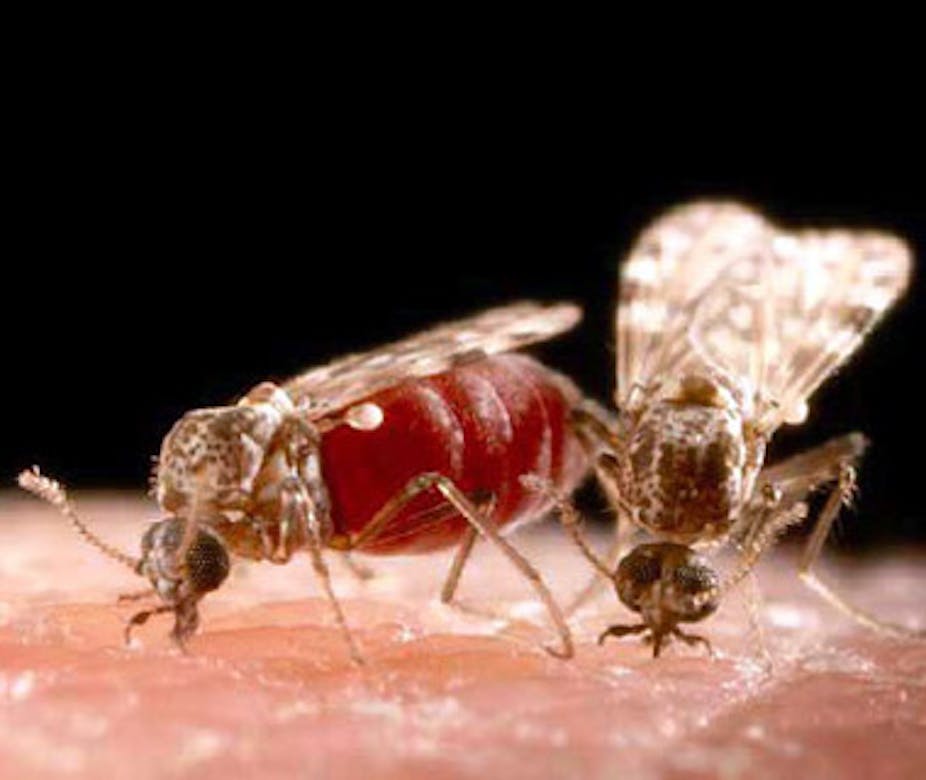Australian researchers are developing a new tool to help track and manage the vast numbers of disease-carrying insects blown from Asia into northern Australia every year by cyclones and monsoon winds.
The new software and modelling tool is among the projects to be developed as part of the CSIRO’s new Biosecurity Flagship launched in Canberra today, a dedicated vehicle bringing together CSIRO experts around the range of Biosecurity issues that challenge Australia.
The Tool for Assessing Pest and Pathogen Airborne Spread, known as TAPPAS and jointly being developed by the CSIRO Biosecurity Flagship, the Bureau of Meteorology and the Department of Agriculture Fisheries and Forestry, will model the risks associated with wind-assisted migration of species like Culicoides, a biting midge that carries an animal disease called Bluetongue virus.
Bluetongue virus in livestock can cause fever, oral and nasal haemorrhages, swollen tongue, emaciation and can slow down wool production in sheep. Its potential spread within Australia is a major concern.
“The appearance of some strains of Culicoides can only be explained by wind-borne movement and we know of a number of other insects that are detected across northern Australia after cyclones,” said Gary Fitt, Director CSIRO Biosecurity Flagship.
“That’s part of the reason why one of our projects is to develop a model to help predict wind-assisted arrivals of insects or plant pathogens into northern Australia, or in fact into any part of Australia. With the same models, we can then predict where these organisms might spread and also use the model in reverse mode to backtrack where they may have came from. That helps us better understand how to prepare for and manage an outbreak.”
Cafe-culture killer
The Biosecurity Flagship, together with its collaborators, will also study ways to reduce the risk of eastern Australia being overrun by the Asian tiger mosquito (Aedes albopictus), which carries diseases like dengue fever and Chikungunya virus.

Chikungunya virus cases fever, headache, fatigue, nausea, vomiting, muscle pain, rash, and joint pain.
The Asian tiger mosquito could spread naturally into Australia through Torres Strait, but is actively blocked there by authorities. The species has, however, made it to the Australian mainland at least twice via imported truck tyres, which sometimes contain small pools of water that harbour mosquitoes.
It is this pathway through trade that needs to be closely managed, said Dr Fitt.
“With this species, we already know through our climate modelling that it can colonise most of the coast of eastern Australia. They are a very aggressive biter, they bite at any time of the day and it makes it very uncomfortable to be outdoors,” said Dr Fitt.
“The evidence we are seeing in parts of Italy is that this mosquito being is blamed for potentially destroying the café culture. People just can’t sit outside because it’s too unpleasant. For us, it could be a barbecue-stopper.”
Dr Fitt said the Biosecurity Flagship develop new ways of reducing the spread of infectious disease-carrying pests like the Asian tiger mosquito and the Culicoides biting midge.
“Climate change is an ongoing process and will certainly change the potential of some species to come here. It could open up more of Australia to some existing invasive species and to others that aren’t here yet,” he said.
Stephen Garnett, Professor of Biodiversity and Sustainability at Charles Darwin University, said big winds had previously blown birds from New Guinea into the Torres Strait islands.
“It’s well known that wind-blown insects can bring disease. There was an outbreak in the Torres Strait Islands of Japanese encephalitis that was brought by mosquitoes but fortunately some pigs were found on the mainland that had antibodies to fight it and it did not become established on that occasion,” he said.

